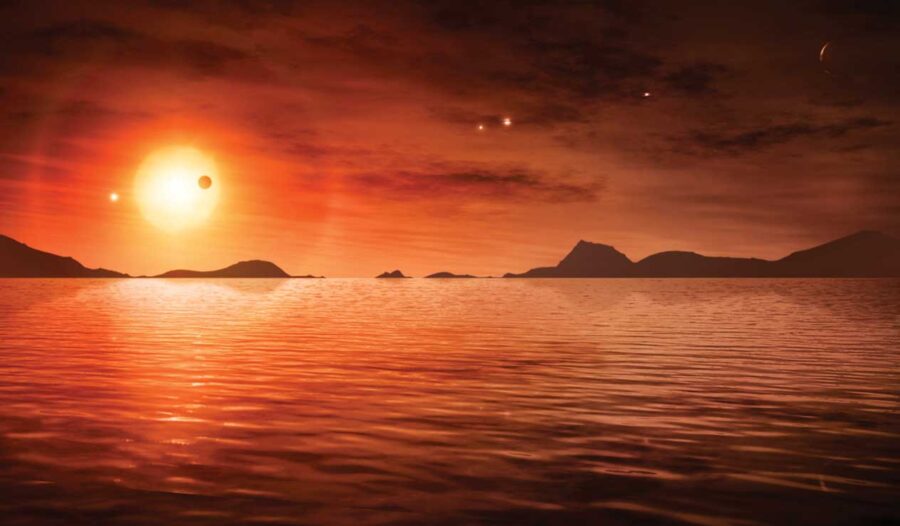Can a newly found exoplanet help explain why Earth and Venus diverged so radically?
In comparative planetology we can’t run controlled experiments, altering factors such as initial composition or distance from a star and then seeing what happens over billions of years. We can only study the random experiments nature has chosen to run and try to piece together the overall story.
The closest we may ever get to a controlled experiment for Earth’s evolution is a comparison with Venus. Our sister world seems to have started with similar ingredients and conditions as our planet — though about a third closer to the Sun — yet it evolved into such an utterly different planet. We’re still trying to work out the timing and mechanisms for this divergence, and to find evidence for or against past oceans on our neighboring world. These questions are a major motivation for the fleet of Venus missions we’ll launch in the next decade (S&T: May 2022, p. 12).

MARK GARLICK / SCIENCE PHOTO LIBRARY
They are tough problems to solve because there are so many variables. Did Earth and Venus actually form out of different stuff? How do rotation rates and magnetic fields affect planetary evolution? How did the massive collision that formed the Moon change our planet? Also, how could we possibly answer these questions by studying only two Earth-size planets?
Fortunately, help is arriving in patterns of photons from distant stars that reveal previously hidden planetary companions. Exoplanets can rescue comparative planetology from the curse of too few examples. It goes both ways: Solar system planets give us ground truth for filling in the vague clues we can gather from a growing harvest of exoplanets, and in turn this multitude will provide context for our home system, teaching us which characteristics are widespread and which are just local quirks.
An exciting new discovery illustrates the complementary nature of these efforts. An international team led by Laetitia Delrez (University of Liège, Belgium) was using a telescope in Chile to verify a planet found by the TESS mission around LP 890-9, a red dwarf star 100 light-years distant, when it found another planet orbiting the same star.

This lucky find, dubbed SPECULOOS-2c, is slightly larger than Earth and located just at the inner edge of that system’s habitable zone. Orbiting its star at only a tenth of Mercury’s distance from the Sun, SPECULOOS-2c receives about 90% of the starlight that Earth receives from the Sun. This means that — depending on evolutionary details that are still poorly understood — the planet might be something like an exo-Earth, or it may instead resemble an exo-Venus. How can we tell?
Its atmosphere would give us a clue. The James Webb Space Telescope could observe starlight passing through its atmosphere, and the mix of gases seen would be very different for a watery Earth than for a parched Venus.
Of all stars known to have planetary systems, LP 890-9 is now the second coolest, in both meanings of the word. Such relatively dim red dwarf stars can host planets that orbit very close by but nonetheless may be habitable, in the sense of having stable liquid water on their surfaces. And having nearly Earth-size planets in this zone, which as far as we know might have inhabited oceans — well, that’s just cool.
What makes a planet become like Earth, with stable oceans and a surface biosphere, as opposed to a scorching, desiccated world like Venus? The next decade of exploration with spacecraft, aided by continuing exoplanet discoveries, should reveal the answers.
This article originally appeared in print in the January 2023 issue of Sky & Telescope. Subscribe to Sky & Telescope here.
 0
0
Comments
You must be logged in to post a comment.